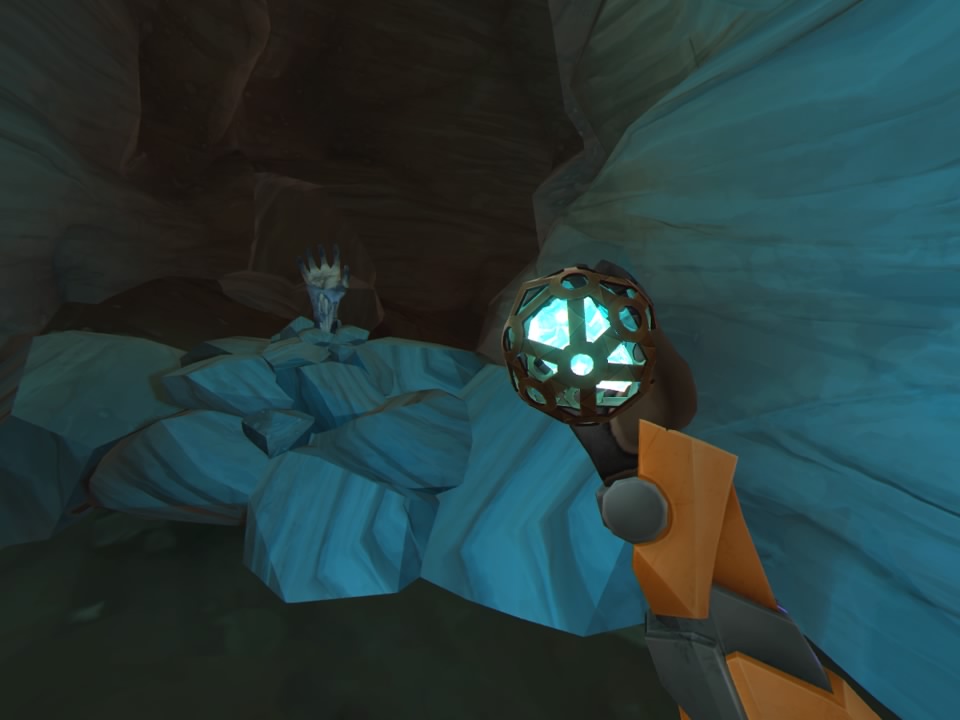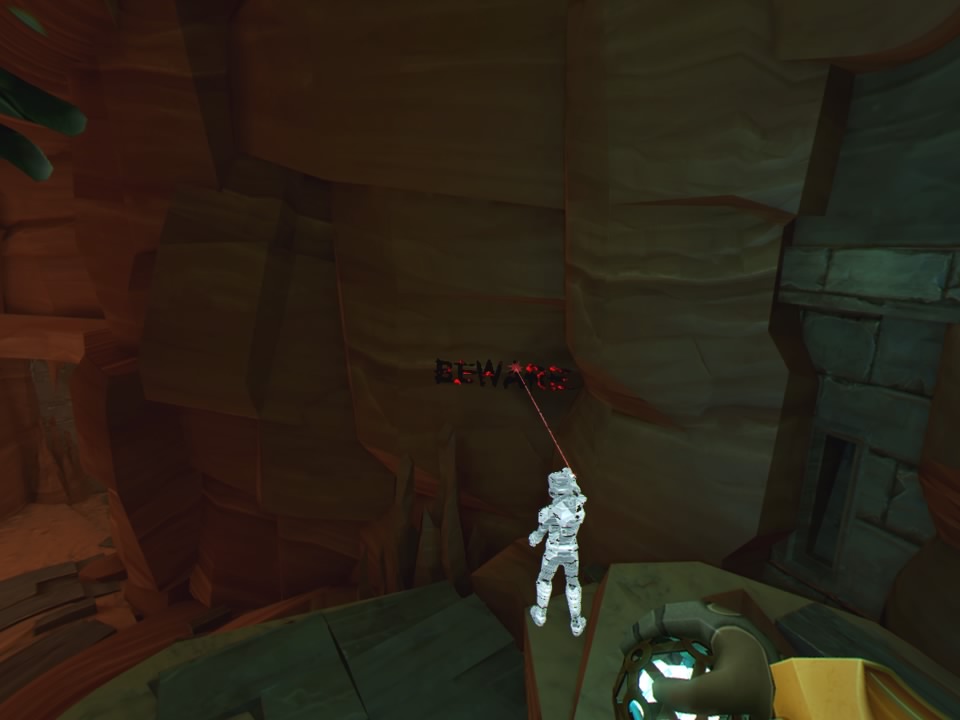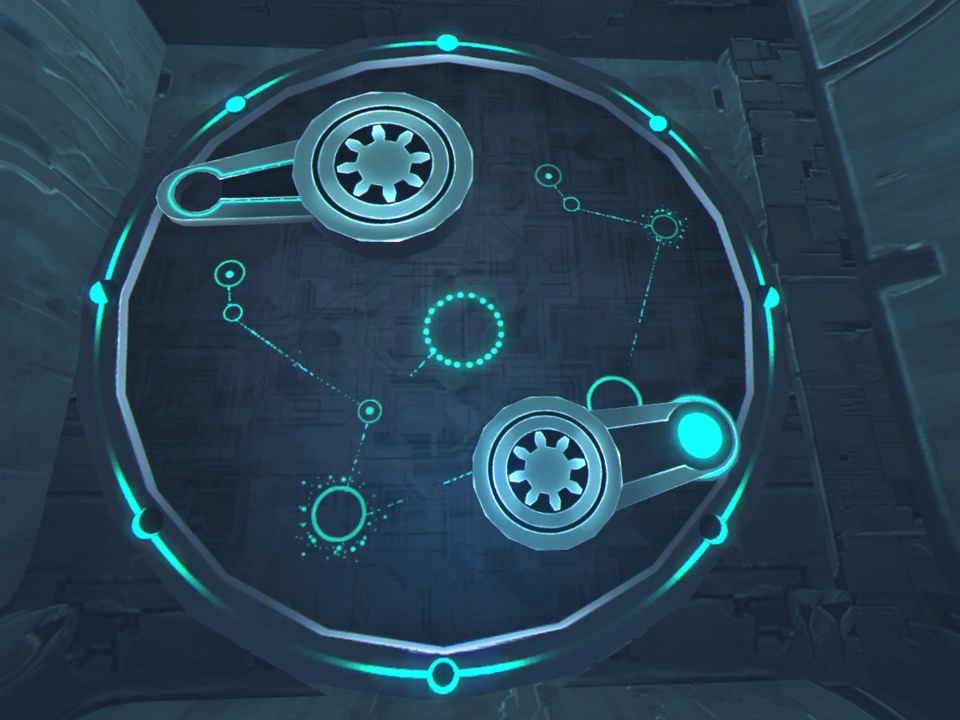I’ve always considered VR to be a multiplier. It has the possibility to take good games and make them better. Likewise, it takes the bad and makes it worse. I don’t feel like I’ve played many middle of the road VR games. At least, not until I played Eclipse: Edge of Light, that is; a video game that I have little ability to formulate much feeling for other than “well, that existed, I guess.” It doesn’t do anything that wrong and has solid ideas throughout, it just doesn’t particularly do anything that interesting either.
The game doesn’t quite begin on its best foot. In fact, it can be described as beginning underfoot. The first few cutscenes are shot from camera angels so low, I was constantly clipping through the floor. This is already an incredibly weird way to start my time with Eclipse, but at least it recovered. You play as an astronaut that crash lands on a mysterious planet. It doesn’t take long to realize that they’re trapped in a time loop and need to try and bring an artifact to a tower to either save or destroy the planet. A bunch of lore can be found, telling the story of a prophet who found the artifact and used it to make themselves a god. There’s also a smoke monster, which I’m pretty sure is making a cameo from Lost, mostly because I’m not actually sure what it had to do with the rest of the plot. It’s interesting, if not particularly unique.
Yeet!

What is unique is how this artifact works. The artifact sits in your hand like a baseball. Want to interact with the world? Throw the artifact at it. Some walls let you create platforms to use a jetpack to fly to, other places you can use the artifact to open doors, and naturally just throwing a metal ball at some objects cause them to break. This is how you will interact with most of the world in Eclipse, and because I have the emotional maturity of a child I began to yell “yeet” every time I threw this thing. I’m not sure if I was supposed to take it seriously, but once it became silly to me, Eclipse never really recovered the more serious tone it was looking to capture.
At least some of these challenges were fun. During my time exploring the alien world, I saw things like statues that would shoot lasers and I had to knock their heads off to stop them, or a boat that brought me along a fixed path while I took out oil rigs by the river. These moments were cool. I really came to appreciate that the throwing had just enough of an auto-lock/homing on it to make it that I didn’t need to have super precision, while still requiring me to aim and put some force behind it.
Yet it always felt like Eclipse could do something more with its gameplay. One point in the game I had to throw the artifact into a blue activation switch. However, it was next to a red “artifact repelling” switch, which always knocked it away from the switch. The solution is to hit a stalagmite that falls on and blocks the red switch. A puzzle even vaguely similar to this never shows up again. Eclipse is full of these one-off puzzles, where you get one simple puzzle that feels like it’s teaching you an important mechanic, then that mechanic is never used again for the rest of the game.
The Best Alien Artifact is One You Can Throw Away

As the game advances you get a couple of other abilities. Sometimes the artifact will transform into a “mirror” which you have to use to scan the environment and look for missing objects. That’s not so bad, if super easy. You also get telekinesis, letting you move specific objects around the world with your mind. The problem is that sometimes you control telekinesis with the left stick, and sometimes you do it with physically looking around. The game seems to just change depending on the object and it doesn’t really make much sense when it switches.
It took me about two hours to finish Eclipse. Outside of solving puzzles and moving forward there’s not much else to do. You can throw the artifact at pots to break them, letting you collect dust that you can use at certain points to unlock bits of lore. You can also scan a few context-specific items in the environment for a little more lore. It’s nice, but there’s nothing tracking these discoveries. Not even trophies, as there’s only five and you get them all for just finishing the game.
When it came out, Eclipse was probably a technical wonder, but that’s because it was also a mobile VR exclusive in 2017. Now it just looks dated. Things like parts of the background clearly being 2D images is laughable at best. Many of the animations clip into each other, or just look hilariously awkward. More than once I also ran into weird visual glitches, such as a late-game segment seeing my character getting trapped in a falling animation while walking down a slight incline.
This is Astrology, Right?

Really, Eclipse: Edge of Light gives off all the feeling of an early VR game that was cool when it first released but hasn’t stood the test of time. VR is advancing at an amazing pace, and some games that were impressive have trouble holding up even only six months later. For a game that originally came out in 2017 to try a rerelease in 2020 with what feels like almost minimal effort? It doesn’t go great. Eclipse: Edge of Light has a few neat ideas, but nothing that isn’t done better anywhere else.
Eclipse: Edge of Light review code provided by the publisher. Version 1.01 reviewed on a standard PS4. For more information on scoring please read our Review Policy.
-
Quite a bit of lore to find
-
A few clever puzzles
-
I will never get tired of yelling "yeet!" while throwing the space baseball
-
Jumps to new puzzle ideas far too quickly
-
Iffy graphics with lots of visual glitches
-
Little to do besides short story mode
-
Telekinesis controls are confusing
-
Why is the smoke monster from Lost here?








